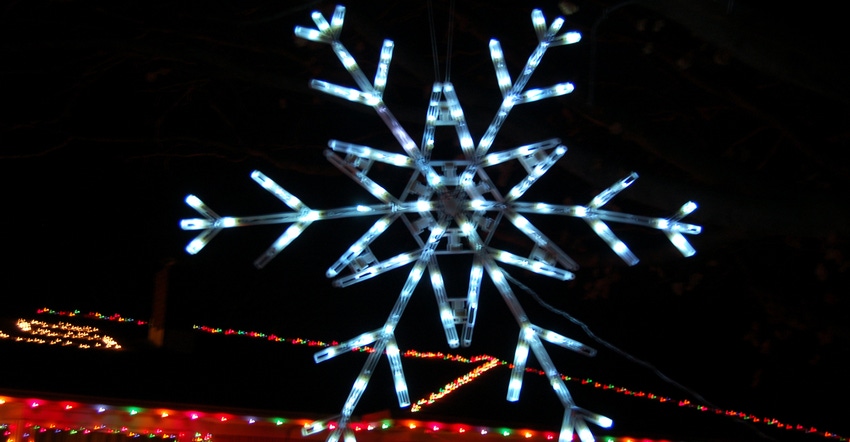November 10, 2017

What is a measurable snowfall? Flurries? Tenth of inch? How is it measured? People make a big deal about snow on Christmas Day. Does it count if you just get flurries? Let’s look at these questions one at a time.
According to the National Weather Service, a measurable snow fall is 0.1 inch or more. A flurry is defined as “an intermittent light snowfall of short duration, generally light snow showers, with no measurable accumulation.” It’s referred to as a trace. A flurry doesn’t result in measurable snowfall.
Snowfall is measured by placing a tool called a snowboard on the ground as a solid, flat reference point for snow depth measurements. Measurements are usually taken near the regular weather station instruments in a clear, open area. Measurements are generally taken as soon as possible after the snow stops to prevent drift and settling of snow.
Snow depth is measured regularly whenever there is snow on the ground. Snow depth is the sum of all snow on the ground, regardless of when it fell. Snow depth is usually reported as the average depth of several measurements within 100 yards of the snowboard. If less than 50% of the ground is covered by snow, trace depth is reported.
White Christmas
Trace values would technically count as snow on the ground, but it means less than 50% of the ground is covered by snow. So a flurry resulting in partial snow cover would be reported as a trace — not measurable snow depth.
Here’s a look at Christmas snows at key Indiana locations since 1871 for snowfall and since 1898 for snow depth.
• Indianapolis. Technically, there’s a 45% chance of snow on Christmas Day. But 21% of those were only trace amounts. On 35 occasions, we’ve had measurable snowfall of 0.1 inch or more, with 5.9 inches in 1909 the max. The last measurable snowfall on Christmas was 0.4 inch in 2010. On 31 occasions, we have had a trace snowfall. The latest trace recorded was in 2013.
If you’re just talking snow on the ground, not falling on Christmas Day, there’s a 49% chance. However, only 28% of those days featured 0.5 inch or greater on the ground.
On 33 occasions, we’ve had measurable snow depth. Christmas Day 2004 featured 9 inches on the ground, which is the record. On 25 occasions, we have had a trace of snow on the ground.
If you combine chance of snowfall on Christmas Day with snowfall on the ground, there’s a 67% chance of a white Christmas. However, about one-third of those were trace amounts, and just over one-third totaled 0.5 inch or more.
• Fort Wayne. Data recorded is different for this location. The largest Christmas Day snowfall was 6.1 inches in 1915. However, the most snow on the ground was 11 inches in 1929. The most recent trace snow was in 2014, and the most recent measurable snow of 0.1 inch came in 2013. The most recent snow depth on the ground was 2 inches last year.
• South Bend. The largest one-day Christmas snow was 6 inches in 1915. The most snow on the ground was 16 inches in 1951. The most recent snowfall was 1 inch in 2013, and there were 2 inches on the ground on Christmas Day last year
Learn more from the National Weather Service website and glossary, and check out this record of Christmas Day snowfall statistics.
Eggert works for the Indiana State Climate Office.
About the Author(s)
You May Also Like




